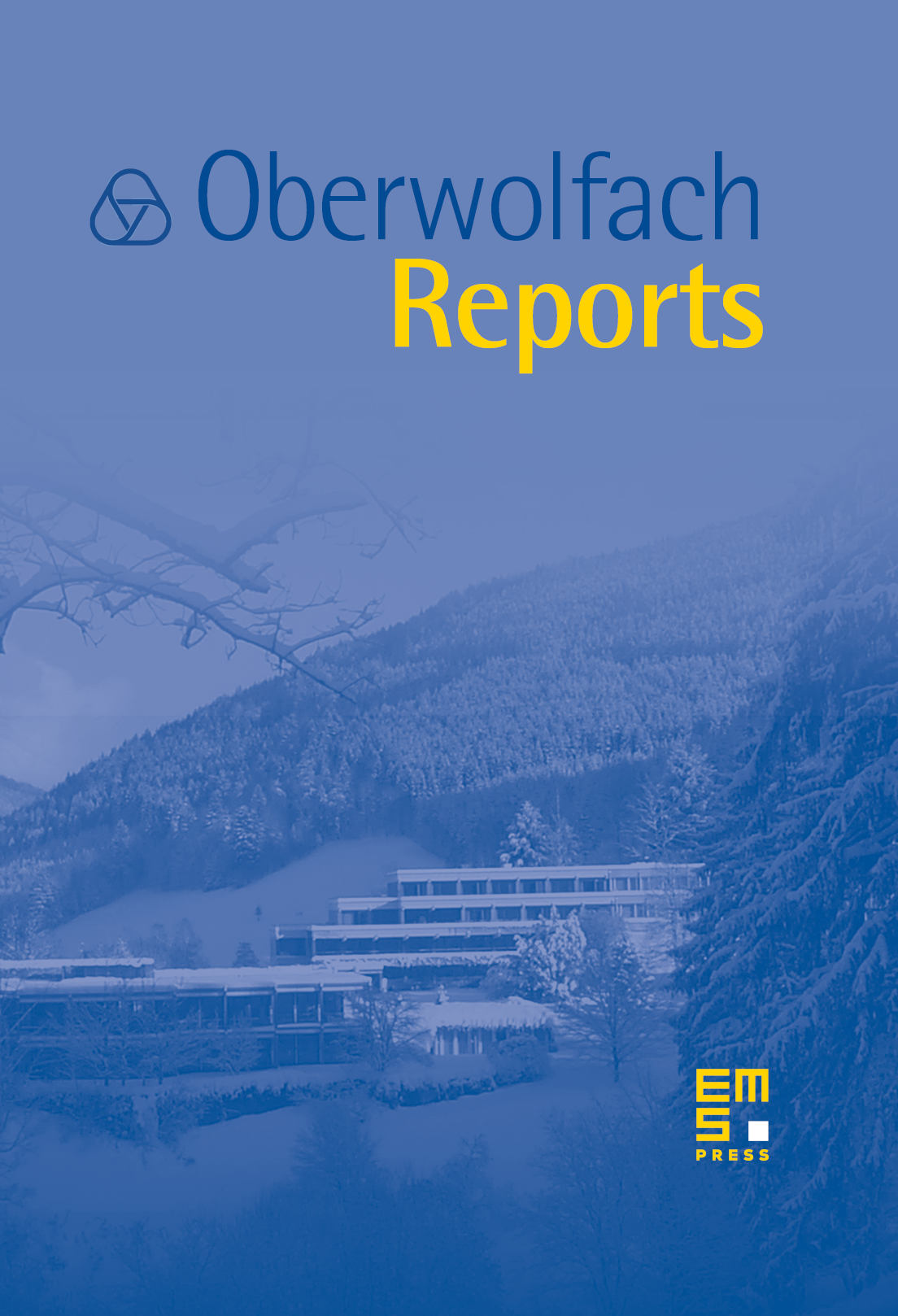Algebraische Zahlentheorie
Guido Kings
Universität Regensburg, GermanyMark Kisin
University of Chicago, United StatesOtmar Venjakob
Universität Heidelberg, Germany

Abstract
Please note the corrected abstract of U. Hartl.
The conference brought together researchers from Europe, the US, and Japan who reported on various recent and ongoing developments in algebraic number theory and related fields. As at previous meetings, organized by Deninger, Schneider and Scholl, one of the clearest themes was the prevalence of -adic methods across a range of areas. A notable difference with previous years was the number of younger people both as speakers and participants.
Colmez reported on his work relating unitary admissible -representations to local Galois representations. This realizes a program of Breuil and stands at the crossroads of -adic Hodge theory, representations of -adic reductive groups and explicit reciprocity laws, as well as having applications to modularity of global Galois representations. Related talks were given by Schneider who explained on going work with Vigneras, attempting to generalize some of Colmez' constructions to higher rank, as well as Orlik who discussed the construction of locally analytic representations from equivariant vector bundles on symmetric spaces.
L. Berger reported on an extension of his earlier work on classification of local Galois representations. Hartl explained how these ideas could be used to give a description of the image of the Rapoport–Zink period morphism. This was a satisfying complement to his talk at the previous meeting where he had sketched some of these ideas.
There were several talks related to Iwasawa theory and reciprocity laws. Zerbes reported on her work on reciprocity laws for higher dimensional local fields. Fukaya reported on joint work with Coates, Kato, Sujatha and Venjakob in non-abelian Iwasawa theory, and Ochiai discussed the Iwasawa theory of ordinary Hida families. The talk by Sharifi was also related to this area. It described a fascinating relation between Galois cohomology and modular symbols, which seems to be closely related to the Main conjecture of Iwasawa theory.
There were a number of talks dealing with congruences between automorphic forms, and applications. The most exciting of these was by Fujiwara who outlined how Taylor–Wiles systems could be used, in certain circumstances, to prove the Leopoldt conjecture for totally real fields. Sorensen discussed his work on level raising for and some applications to Selmer groups. T. Berger explained how to construct Galois representations attached to cusp forms on over an imaginary field. These had been constructed by Taylor about 15 years ago, but were previously known to have the correct -factors only at a set of primes of density 1. Berger also explained ongoing work on modularity lifting theorems in this situation. This would be an exciting advance since such theorems are currently available only over totally real fields.
There were two talks on polylogarithms. Blottiere explained his results on the Eisenstein classes on Hilbert modular varieties and applications to special values of -functions. Bannai discussed the crystalline realization of the elliptic polylogarithm. Somewhat related to this was the talk of Huber on the -adic Borel regulator.
Other talks were given by Yoshida who explained a computation of vanishing cycles on Shimura varieties, realizing the local Langlands and Jacquet–Langlands correspondences, Görtz who spoke on affine Deligne–Lusztig varieties, Saito who outlined his construction of the characteristic cycle of an -adic sheaf, and Schmidt who discussed his work on integer rings of type .
Cite this article
Guido Kings, Mark Kisin, Otmar Venjakob, Algebraische Zahlentheorie. Oberwolfach Rep. 4 (2007), no. 3, pp. 1741–1792
DOI 10.4171/OWR/2007/30